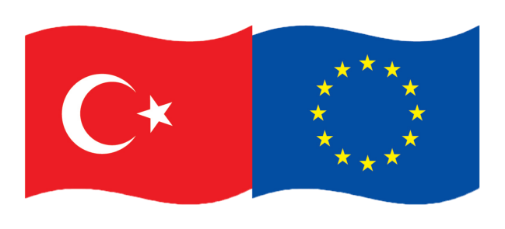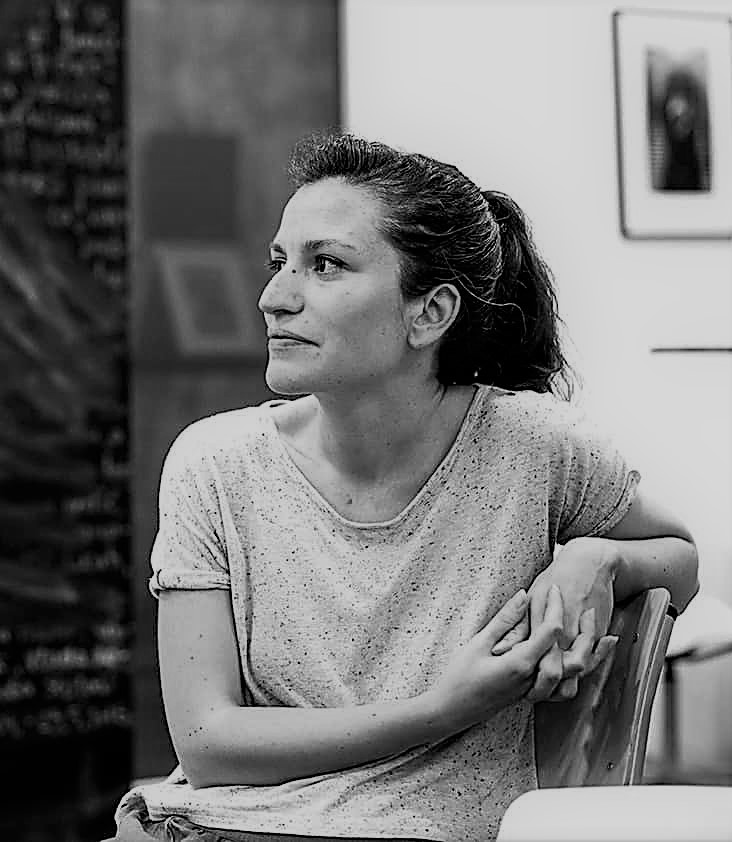
Bu proje Avrupa Birliği tarafından finanse edilmektedir.
This project is funded by the European Union.
Sevgi Ortaç
Sevgi Ortaç (1984, İstanbul) Bilgi Üniversitesi’nde sinema, Dutch Art Institute’ta güzel sanatlar eğitimi aldı. Mekan, gündelik hayat ve kültürel miras üzerine çalışmayı hep sevdi. İstanbul Kara Surları üzerine Tekduvarlı şehir adlı bir kısa filmi ve Baş Aşağı Anıt adlı bir kitabı vardır. Kentsel dönüşüm, kent hakkı ve yerel direnişlere odaklanan araştırma-sanat projelerinde yer aldı (Global Prayers - Redemption and Liberation in the City 2011-12, We Won’t Leave! 2016, Actopolis: Art of Action 2017, Here and Elsewhere: Re-assemblage of Sprawling Landscapes 2019). Zanaatin kent mekanlarıyla ilişkisi ve zanaat eğitimi üzerine Aslı Kıyak İngin ile birlikte Zanaatle Örülmüş Mahalleler (Adhocracy, 1. İstanbul Tasarım Bienali 2012, Adhocracy Athens: From Making Things to Making the Commons 2015) ve Usta Bunu Ben Yapayım mı? (VÇMS, İstanbul Modern, 2014) sergilerini hazırladı. Dürtük(Direnen Üretici Tüketici Kolektifi) ve Kuçe Yemek Kolektifi gibi gıda topluluklarında yer aldı. 2017’den bu yana Koç Üniversitesi’nde yarı zamanlı öğretim görevlisidir.
Sevgi Ortaç (1984, Istanbul) studied cinema at Bilgi University and fine arts at Dutch Art Institute. She has always loved working on space, everyday life and cultural heritage. She has a short film about the Land Walls of Istanbul called Tekduvarlı Şehir and a book called Baş Aşağı Anıt. She took part in research and art projects focusing on urban transformation, the right to the city and local resistances (Global Prayers - Redemption and Liberation in the City 2011-12, We Won't Leave! 2016, Actopolis: Art of Action 2017, Here and Elsewhere: Re- assembly of Sprawling Landscapes 2019). She prepared Zanaatle Örülmüş Mahalleler (Adhocracy, 1. İstanbul Tasarım Bienali 2012, Adhocracy Athens: From Making Things to Making the Commons 2015) and Usta Bunu Ben Yapayım mı? (VÇMS, İstanbul Modern, 2014) exhibitions with Aslı Kıyak İngin on the relationship of crafts with urban spaces and craft education. She took part in food societies such as Dürtük (Direnen Üretici Tüketici Kolektifi) and Kuçe Yemek Collective. She has been a part-time lecturer at Koç University since 2017.
Yayın Özeti
Bu kitap, hakim bir tepenin taşınabilir ve taşınamaz, elle tutulur ve tutulamaz mirasına dair bir sözlük denemesi. Eski Mardin Şehri ve Kalesi’nin yerleştiği tepe, Güney’e, Mezopotamya’ya bakıyor. Kalede soğuk savaş döneminden kalan Hava Radar Üssü ve Mardin Evlerinin pencereleri bu manzarayı paylaşıyor. Yıllardır arkeolojik kazıların ve koruma çalışmalarının sürdüğü Kale hala askeri bölge ve halka kapalı. Sözlük maddelerinin tamamı alıntılardan oluşuyor. Bu alıntılar bölgeye dair haberlerden, askeri ve coğrafi kaynaklardan ve Mardin’de yaptığım görüşmelerden alıntılar. Askeri, arkeolojik, mimari, coğrafi terimleri yeniden ilişkilendirerek kaleyi halka, başka varlıklara ve olasılıklara açmayı hayal ediyorum. Bu aynı zamanda sanata ve hikaye anlatmaya dair de bir soru; manzaraya hakim olmakla, hakimiyet kurmak arasında ferah bir boşluk var mı?
This book is a lexical essay on the movable and immovable, tangible and intangible legacy of a dominant hill. The hill, on which the old Mardin City and Castle is located, looks to the South, to Mesopotamia. The windows of the Mardin Houses and Air Radar Base from the cold war period in the castle share this view. The castle, where archaeological excavations and conservation works have been going on for years, is still a military zone and closed to the public. All of the lexical items are made up of quotations. These quotations are from news about the region, from military and geographical sources, and from interviews I had in Mardin. I dream of opening the castle to the public, to other assets and possibilities by reassociating military, archaeological, architectural, geographical terms. It's also a question about art and storytelling; Is there a spacious gap between possessing the landscape and dominating it?
